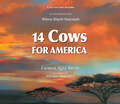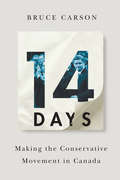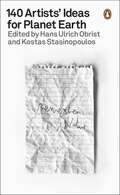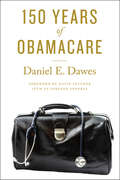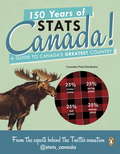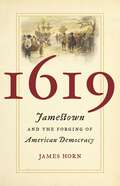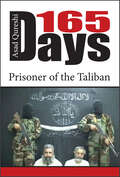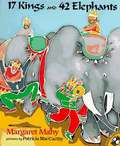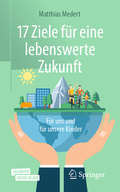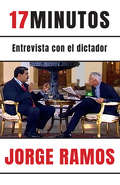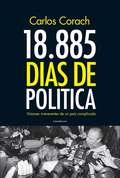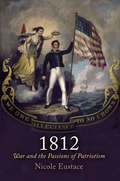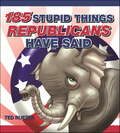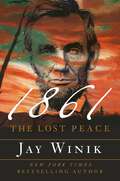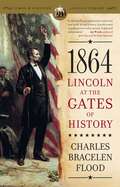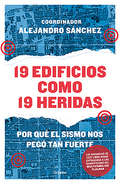- Table View
- List View
14 Cows for America
by Carmen Agra Deedy Wilson Kimeli Naiyomah<P>It is June of 2002, and a very unusual ceremony begins in a far-flung village in western Kenya. <P>An American diplomat is surrounded by hundreds of Maasai people. A gift is about to be bestowed on the men, women, and children of America, and he is there to accept it. The gift is as unsought and unexpected as it is extraordinary. <P>A mere nine months have passed since the September 11 attacks, and hearts are raw. Tears flow freely from American and Maasai alike as these legendary warriors offer their gift to a grieving people half a world away. <P>World of the gift will travel news wires around the globe. Many will be profoundly touched, but for Americans, this selfless gesture will have deeper meaning still. <P>For a heartsick nation, the gift of fourteen cows emerges from the choking dust and darkness as a soft light of hope ... and friendship. <P>[This text is listed as an example that meets Common Core Standards in English language arts in grades 2-3 at http://www.corestandards.org.]
14 Cows for America
by Carmen Agra DeedyThis New York Times bestseller recounts the true story of the touching gift bestowed on the US by the Maasai people in the wake of the September 11 attacks.In June of 2002, a mere nine months since the September 11 attacks, a very unusual ceremony begins in a far-flung village in western Kenya. An American diplomat is surrounded by hundreds of Maasai people. A gift is about to be bestowed upon the American men, women, and children, and he is there to accept it. The gift is as unexpected as it is extraordinary.Hearts are raw as these legendary Maasai warriors offer their gift to a grieving people half a world away. Word of the gift will travel newswires around the globe, and for the heartsick American nation, the gift of fourteen cows emerges from the choking dust and darkness as a soft light of hope―and friendship.With stunning paintings from Thomas Gonzalez, master storyteller Carmen Agra Deedy (in collaboration with Naiyomah) hits all the right notes in this elegant story of generosity that crosses boundaries, nations, and cultures.
14 Days
by Bruce CarsonA first-hand look into the back rooms of the conservative movement in Canada, 14 Days provides insights into how the recent history of the Canadian right has influenced the Conservative government over the past two decades. Bruce Carson, having worked in close proximity to many Conservative leaders, describes a series of important moments in the disintegration, re-integration, and eventual repeated electoral success of the modern Conservative Party, formed from its Progressive Conservative forebears. Carson recounts how decisions are made and communicated, how issues are managed, and policies are developed under Harper's leadership. Crucial moments in the Conservatives' rise to power - from the devastating results of the 1993 election to the growth of the Reform Party and its election as Official Opposition, through the parties' merger, leadership decisions, conventions, and elections as minority and majority governments and most recently, the Conservative Party as majority government holder in Canada - are presented from the point of view of an outspoken witness and active participant. Carson candidly shares information on the government's approaches to Afghan detainees, the Cadman and Schreiber affairs, the 2008 constitutional crisis and worldwide recession, the development of their first budget, and the determination of the tenets of Harper's approach to federalism. A rare, behind-the-scenes account of the Harper Conservatives from opposition to government, 14 Days provides a vivid portrayal of all participants and will be eagerly read by anyone interested in the government's inner circle.
14 Days: Making the Conservative Movement in Canada
by Bruce CarsonA first-hand look into the back rooms of the conservative movement in Canada, 14 Days provides insights into how the recent history of the Canadian right has influenced the Conservative government over the past two decades. Bruce Carson, having worked in close proximity to many Conservative leaders, describes a series of important moments in the disintegration, re-integration, and eventual repeated electoral success of the modern Conservative Party, formed from its Progressive Conservative forebears. Carson recounts how decisions are made and communicated, how issues are managed, and policies are developed under Harper's leadership. Crucial moments in the Conservatives' rise to power - from the devastating results of the 1993 election to the growth of the Reform Party and its election as Official Opposition, through the parties' merger, leadership decisions, conventions, and elections as minority and majority governments and most recently, the Conservative Party as majority government holder in Canada - are presented from the point of view of an outspoken witness and active participant. Carson candidly shares information on the government's approaches to Afghan detainees, the Cadman and Schreiber affairs, the 2008 constitutional crisis and worldwide recession, the development of their first budget, and the determination of the tenets of Harper's approach to federalism. A rare, behind-the-scenes account of the Harper Conservatives from opposition to government, 14 Days provides a vivid portrayal of all participants and will be eagerly read by anyone interested in the government's inner circle.
14 Miles: Building the Border Wall
by DW GibsonAn esteemed journalist delivers a compelling on-the-ground account of the construction of President Trump&’s border wall in San Diego—and the impact on the lives of local residents.In August of 2019, Donald Trump finished building his border wall—at least a portion of it. In San Diego, the Army Corps of engineers completed two years of construction on a 14-mile steel beamed barrier that extends eighteen-feet high and cost a staggering $147 million. As one border patrol agent told reporters visiting the site, &“It was funded and approved and it was built under his administration. It is Trump&’s wall.&” 14 Miles is a definitive account of all the dramatic construction, showing readers what it feels like to stand on both sides of the border looking up at the imposing and controversial barrier. After the Department of Homeland Security announced an open call for wall prototypes in 2017, DW Gibson, an award-winning journalist and Southern California native, began visiting the construction site and watching as the prototype samples were erected. Gibson spent those two years closely observing the work and interviewing local residents to understand how it was impacting them. These include April McKee, a border patrol agent leading a recruiting program that trains teenagers to work as agents; Jeff Schwilk, a retired Marine who organizes pro-wall rallies as head of the group San Diegans for Secure Borders; Roque De La Fuente, an eccentric millionaire developer who uses the construction as a promotional opportunity; and Civile Ephedouard, a Haitian refugee who spent two years migrating through Central America to the United States and anxiously awaits the results of his asylum case. Fascinating, propulsive, and incredibly timely, 14 Miles is an important work that explains not only how the wall has reshaped our landscape and countless lives but also how its shadow looms over our very identity as a nation.
140 Artists' Ideas for Planet Earth
by Hans Ulrich Obrist Kostas StasinopoulosThrough 140 drawings, thought experiments, recipes, activist instructions, gardening ideas, insurgences and personal revolutions, artists who spend their lives thinking outside the box guide you to a new worldview; where you and the planet are one.Everything here is new. We invite you to rip out pages, to hang them up at home, to draw and scribble, to cook, to meditate, to take the book to your nearest green space.Featuring Olafur Eliasson, Etel Adnan, Alexis Pauline Gumbs, Jane Fonda & Swoon, Judy Chicago, Black Quantum Futurism Collective, Vivienne Westwood, Cauleen Smith, Marina Abramovic, Karrabing Film Collective, and many more.
150 Jahre Gesetzgebung in Deutschland: Entwicklungen des Gesetzgebungsverfahrens von der konstitutionellen Monarchie 1871 bis zur parlamentarischen Demokratie 2021
by Martin H. MöllersDieses Buch erläutert die verfassungsmäßige Ausgestaltung der Gesetzgebungsverfahren im Kaiserreich, in der Weimarer Republik und in der Bundesrepublik Deutschland im Zusammenhang. Dadurch wird nachvollziehbar, dass die Gesetzgebung der heutigen parlamentarischen Demokratie ihre Basis bereits in der konstitutionellen Monarchie des Deutschen Kaiserreichs vor 150 Jahren hat. Obwohl das Verfahren der Gesetzgebung im Kaiserreich vordemokratisch ausgestaltet war, sind ihre wesentlichen Merkmale bis heute unverändert. Welche Änderungen die Gesetzgebungsverfahren von Verfassung zu Verfassung im Einzelnen erfuhren, analysiert das Buch und stellt heraus, dass diese Änderungen vor allem das Bund-Länder-Verhältnis, die Volkssouveränität sowie den Einfluss der Grundrechte auf die Gesetzgebung betrafen. Dabei kommen auch Auffassungen der Staatsrechtslehre früherer Zeiten zur Rechtsstaatlichkeit zur Sprache, die immer noch zum derzeitigen Meinungsspektrum zählen, heute jedoch nicht mehr zu halten sind. Zudem dokumentiert das Buch, wer an den Gesetzgebungsverfahren offiziell und wer faktisch beteiligt war bzw. noch ist und welche politischen Einflussnahmen auf die Gesetzgebung im Lauf der Geschichte festzustellen sind. So wird u.a. dokumentiert, dass insbesondere der Mangel an Transparenz der Zusammenarbeit von Exekutive und Legislative mit Lobbyisten dazu führt, dass viele Gesetze einzelne Bevölkerungsgruppen oder Wirtschaftszweige bevorzugen.
150 Years of ObamaCare
by Daniel E. DawesGo behind the curtain of the creation and implementation of the Affordable Care Act.In this groundbreaking book, health-care attorney Daniel E. Dawes explores the secret backstory of the Affordable Care Act, shedding light on the creation and implementation of the greatest and most sweeping equalizer in the history of American health care. An eye-opening and authoritative narrative written from an insider’s perspective, 150 Years of ObamaCare debunks contemporary understandings of health reform. It also provides a comprehensive and unprecedented review of the health equity movement and the little-known leadership efforts that were crucial to passing public policies and laws reforming mental health, minority health, and universal health.An instrumental player in a large coalition of organizations that helped shape ObamaCare, Dawes tells the story of the Affordable Care Act with urgency and intimate detail. He reveals what went on behind the scenes by including copies of letters and e-mails written by the people and groups who worked to craft and pass the law. Dawes explains the law through a health equity lens, focusing on what it is meant to do and how it affects various groups. Ultimately, he argues that ObamaCare is much more comprehensive in the context of previous reform efforts than is typically understood.In an increasingly polarized political environment, health reform has been caught in the cross fire of the partisan struggle, making it difficult to separate fact from fiction. Offering unparalleled and complete insight into the efforts by the Obama administration, Congress, and external stakeholders, 150 Years of ObamaCare illuminates one of the most challenging legislative feats in the history of the United States.
150 Years of Stats Canada!: A Guide to Canada's Greatest Country
by Stats CanadaCanada's funniest online sensation is back to celebrate the country's 150th anniversary--bigger, bolder, and only 10% reused material!Want to know what the hottest new Canadian apps are? Need a handy chart to help you decide what Can-Con music to listen to? How about the top Google searches across the nation? In this handy guide to Canada, the tireless experts at @stats_canada reveal all the must-know quirks from coast to coast to frigid coast. From helpful tips on the Vancouver housing market to planning the ultimate Montreal bachelor party, Stats Can is on the case. And discover just how Canadian you are with the official checklist, not to mention the Tim Hortons etiquette quiz. With crucial updates about Canada on its big birthday, and all the stats, charts, and graphs to back them up, 150 Years of Stats Canada! is the perfect way to celebrate everything we love about this great country. Disclaimer: still 100.6% not affiliated with Statistics Canada
1619: Jamestown and the Forging of American Democracy (Published By The Omohundro Institute Of Early American History And Culture And The University Of North Carolina Press Ser.)
by James HornAn extraordinary year in which American democracy and American slavery emerged hand in handAlong the banks of the James River, Virginia, during an oppressively hot spell in the middle of summer 1619, two events occurred within a few weeks of each other that would profoundly shape the course of history. In the newly built church at Jamestown, the General Assembly--the first gathering of a representative governing body in America--came together. A few weeks later, a battered privateer entered the Chesapeake Bay carrying the first African slaves to land on mainland English America.In 1619, historian James Horn sheds new light on the year that gave birth to the great paradox of our nation: slavery in the midst of freedom. This portentous year marked both the origin of the most important political development in American history, the rise of democracy, and the emergence of what would in time become one of the nation's greatest challenges: the corrosive legacy of racial inequality that has afflicted America since its beginning.
165 Days: Prisoner of the Taliban
by Asad QureshiA gripping first-person account of long-term captivity at the hands of terrorists in Waziristan, the dangerous border region between Pakistan and Afghanistan. While Asad was held hostage, his family struggled mightily to free him. This book highlights not only the will to survive, but also the love of family.There are several popular accounts of Taliban hostages who were rescued by American Special Forces; Asad was handed over to and escorted home by operatives of Al Qaeda.
17 Kings and 42 Elephants
by Margaret MahyWhere those kings are headed is a mystery, but no travelers ever had such a jolly time. Here is a royal romp through a tongue-twisting paradise.
17 Ziele für eine lebenswerte Zukunft: Für uns und für unsere Kinder
by Matthias MedertVielleicht machst auch du dir Sorgen darüber, wohin die vielen ökologischen und sozialen Probleme führen werden, von welcher Art und Ausmaß die Konsequenzen sein können und wie diese das Leben von Menschen betreffen werden? Dann könnte dieses Buch interessant für Dich sein: Es beschreibt anhand der 17 UN-Nachhaltigkeitsziele eine Vision für eine lebenswerte Zukunft. Du erfährst kurz und verständlich zu jedem der Ziele konkrete Hintergründe, Zusammenhänge und Herausforderungen, die es auf dem Weg dorthin noch zu meistern gilt. Es macht die Themen greifbar - sowohl global als auch bezogen auf Deutschland. Gleichzeitig liefert Dir das Buch Anregungen, wie Du selbst dazu beitragen kannst, die großen Probleme der Menschheit zu lösen: Klimawandel, Energie, Plastikmüll, Artenvielfalt, Umweltschutz, Hunger, Armut, etc.Zusammen können wir es schaffen, die 17 Ziele umzusetzen, indem wir sie mit konkreten Inhalten füllen. Falls uns das gelingt fragen unsere Kinder vielleicht eines Tages: „Wie habt ihr damals die Erde gerettet und die Menschheit in das Zeitalter der sozialen Gerechtigkeit geführt?“
17 minutos: Entrevista con el dictador
by Jorge Ramos ÁvalosEl libro sobre cómo el autor desenmascaró a Maduro ante las cámaras: con todo lo que ocurrió antes y después. El 25 de febrero de 2019, apoyado por su equipo de Univisión, Jorge Ramos realizó una entrevista al dictador de Venezuela, Nicolás Maduro. Preparada minuciosamente, pasado el primer cuarto de hora, y luego de evidenciar su disgusto por el severo cuestionamiento del periodista (fiel a su compromiso de confrontar a los poderosos), el entrevistado la dio por terminada abruptamente. Se producía así un tremendo acto de censura que implicó confiscar el equipo de grabación, la detención del periodista y finalmente su deportación. Con un estilo directo y crítico, Jorge narra los recovecos de esta peligrosa experiencia periodística que tuvo repercusión mundial, incluyendo lo que hizo para no ser encarcelado, salvar a sus colaboradores y recuperar, tiempo después, la entrevista requisada.
175 Years of Persecution: A History of the Babis & Baha'is of Iran
by Fereydun VahmanFor almost two centuries, followers of the Baha&’i faith, Iran&’s largest religious minority, have been persecuted by the state. They have been made scapegoats for the nation&’s ills, branded enemies of Islam and denounced as foreign agents. Since the Islamic Revolution of 1979 Baha&’is have been barred from entering the nation&’s universities, more than two hundred have been executed, and hundreds more imprisoned and tortured. Now, however, Iran is at a turning point. A new generation has begun to question how the Baha&’is have been portrayed by the government and the clergy, and called for them to be given equal rights as fellow citizens. In documenting, for the first time, the plight of this religious community in Iran since its inception, Fereydun Vahman also reveals the greater plight of a nation aspiring to develop a modern identity built on respect for diversity rather than hatred and self-deception.
18.885 días de política: Visiones irreverentes de un país complicado
by Carlos CorachUn interesante y lúcido relato de memorias de 18.885 días de actividadpolítica, que se leen en uno. Carlos Corach confiesa aquí que ha vivido (y sigue viviendo) una intensavida política: del desarrollismo al menemismo, del Colegio Nacional deBuenos Aires al Pacto de Olivos, el ex ministro del Interior repasa cadapeldaño, cada alegría, cada traspié y cada enseñanza de su carrera. Noevita tema alguno y subraya en todos una necesidad que hoy pareceolvidada: la del diálogo como herramienta principal de la política. DiceCorach en estas memorias como un apasionante manual de historiaargentina reciente: «Entendí que la política exige comprender y aceptarla diversidad de opiniones, que siempre hay que dialogar con aquelloscon quienes disentimos y que la relación con los adversarios,permanentes o circunstanciales, exige siempre el respeto mutuo».
1812
by Nicole EustaceAs military campaigns go, the War of 1812 was a disaster. By the time it ended in 1815, Washington, D.C., had been burned to the ground, the national debt had nearly tripled, and territorial gains were negligible. Yet the war gained so much popular support that it ushered in what is known as the "era of good feelings," a period of relative partisan harmony and strengthened national identity. Historian Nicole Eustace's cultural history of the war tells the story of how an expensive, unproductive campaign won over a young nation--largely by appealing to the heart.1812 looks at the way each major event of the war became an opportunity to capture the American imagination: from the first attempt at invading Canada, intended as the grand opening of the war; to the battle of Lake Erie, where Oliver Perry hoisted the flag famously inscribed with "Don't Give Up the Ship"; to the burning of the Capitol by the British. Presidential speeches and political cartoons, tavern songs and treatises appealed to the emotions, painting war as an adventure that could expand the land and improve opportunities for American families. The general population, mostly shielded from the worst elements of the war, could imagine themselves participants in a great national movement without much sacrifice. Bolstered with compelling images of heroic fighting men and the loyal women who bore children for the nation, war supporters played on romantic notions of familial love to espouse population expansion and territorial aggression while maintaining limitations on citizenship. 1812 demonstrates the significance of this conflict in American history: the war that inspired "The Star-Spangled Banner" laid the groundwork for a patriotism that still reverberates today.
185 Stupid Things Republicans Have Said
by Ted RueterTed Rueter panders to Republican party lines by collecting 370 oratorical guffaws credited to popular politicians. Categorized in alphabetical order and presented by subject topic, the quips include:Osama bin Laden: "[Osama bin Laden] is either alive and well or alive and not well or not alive." —Donald RumsfeldMisunderestimation: "They misunderestimated me." —George W. Bush
1857 Guerra de Independencia de la India/1857 Motín de Los Cipayos de la India.
by Shahid Hussain RajaEl 27 de abril de 1857, ochenta y cinco soldados de un regimiento Bengalí de la British East Indian Company, publicado en Meerut, desobedecieron las órdenes de su oficial británico superior, de usar los nuevos cartuchos para los nuevos rifles Enfield, presuntamente empacados en grasa de vaca y cerdo. Se les impuso un castigo severo a los soldados desobedientes, y esto también frente a sus colegas, resultando en el motín de varios regimientos y finalmente se convirtió en un levantamiento general de la gente de India. Fueron despiadadamente reprimidos por los británicos con la ayuda de su tecnología superior y soporte de las élites locales. Sin embargo, como cualquier evento cataclísmico, dio origen a diferentes tendencias sociales, políticas y económicas, las cuales todavía están dando forma al curso de acontecimientos en los estados postcoloniales de India, Pakistán, Bangladesh y otros países del subcontinente Indio. Este pequeño manual intenta descubrir la naturaleza, causas y consecuencias de este hito tan importante de la historia de las luchas de la gente de India por la Independencia. Esto explica el trasfondo de la Guerra de Independencia de India en 1857 o como algunos escritores le llaman, El Motín de los Cipayos de la India de 1857, enumera en detalle las causas sociales, económicas y políticas de este acontecimiento trascendental, narra el curso de los eventos, razones de su fracaso y termina con un análisis acerca del impacto a largo y corto plazo. Por último, argumenta que muchas de las tendencias de hoy en día en India, Pakistán y Bangladesh tienen sus raíces en políticas adoptadas por los administradores británicos en las secuelas de este levantamiento.
1857 Indischer Unabhängigkeitskrieg (Meuterei der indischen Sepoys): Ursachen und Folgen
by Shahid Hussain RajaErläutert die Hintergründe des indischen Unabhängigkeitskrieges von 1857 oder das, was ein Teil der Schriftsteller als "Sepoy's Mutiny" von 1857 bezeichnet, zählt detailliert die sozialen, wirtschaftlichen und politischen Ursachen dieses folgenschweren Ereignisses auf, schildert den Verlauf der Ereignisse, die Gründe für das Scheitern und endet mit einer detaillierten Analyse der lang- und kurzfristigen Auswirkungen.
1861: The Lost Peace
by Jay WinikFrom an award-winning historian and New York Times bestselling author, a gripping, fly-on-the-wall account of the weeks leading up to Abraham Lincoln's decision to go to war against the Confederacy.1861: The Lost Peace is the story of President Lincoln&’s difficult and courageous decision at a time when the country wrestled with deep moral questions of epic proportions. Through Jay Winik&’s singular reporting and storytelling, readers will learn about the extraordinary Washington Peace Conference at the Willard Hotel to avert cataclysmic war. They will observe the irascible and farsighted Senator JJ Crittenden, the tireless moderate seeking a middle way to peace. Lincoln himself called Crittenden &“a great man&” even as Lincoln jousted with him. Readers will glimpse inside Lincoln&’s cabinet—the finest in history—which rivaled the executive in its authority, a fact too often forgotten, and witness a parade of statesmen frenetically grasping for peace rather than the spectacle of a young nation slowly choking itself to death. A perfect read for history buffs, with timely overtones to our current political climate.
1864
by Charles Bracelen FloodIn a masterful narrative, historian and biographer Charles Bracelen Flood brings to life the drama of Lincoln's final year, in which he oversaw the last campaigns of the Civil War, was reelected as president, and laid out his majestic vision for the nation's future in a reunified South and in the expanding West.
1876: Number 3 in series (Narratives of empire)
by Gore VidalWith the centennial year of the United States as the target of this historical novel, Gore Vidal again mounts a glorious expedition into that grimy and intricate activity called politics. And this is politics as it ought to be: gossip, corruption, money, dinner parties, more corruption, and all the tacky panoply of power. Into the rarefied atmosphere of a world where money has begun to talk very loudly ? usually through the mouths of people called Astor ? step Charles Schuyler and his daughter Emma. Charlie is the unacknowledged bastard son of Aaron Burr; Emma is rather beautiful; and both think it is prudent to return from penury in Europe and secure a fortuitous marriage for Emma. But America is no longer a young republic; it's a fledgling international superpower with its attendant seedy administration, dubious election campaigns, snobbery, 'popped corn', 'speaking tubes' and 'perpendicular railways' (lifts). It's a world that will welcome into its social and political bosom these two attractive exotics with the right names. And it's a world whose every political peccadillo, social slip-up and irresistible intrigue is recorded in this, the journal of Charlie Schuyler.
18885 DÍAS DE POLITICA (EBOOK)
by Carlos CorachCarlos Corach confiesa aquí que ha vivido (y sigue viviendo) una intensa vida política: del desarrollismo al menemismo, del Colegio Nacional de Buenos Aires al Pacto de Olivos, el ex ministro del Interior repasa cada peldaño, cada alegría, cada traspié y cada enseñanza de su carrera. No evita tema alguno y subraya en todos una necesidad que hoy parece olvidada: la del diálogo como herramienta principal de la política. Dice Corach, en estas memorias de 18.885 días que se leen en uno, como un apasionante manual de historia argentina reciente: "Entendí que la política exige comprender y aceptar la diversidad de opiniones, que siempre hay que dialogar con aquellos con quienes disentimos y que la relación con los adversarios, permanentes o circunstanciales, exige siempre el respeto mutuo".
19 edificios como 19 heridas: Por qué el sismo nos pegó tan fuerte
by Alejandro SánchezEl 19 de septiembre de 2017 un terremoto azotó México. Murieron 369 personas. Pero no las mató el sismo. Los responsables fueron la corrupción, la impunidad, la dejadez, el olvido e incluso la falta de cultura cívica. A un año del desastre, esta obra investiga qué salió mal en 19 de los edificios más dañados por el temblor. ¿Por qué hubo tantos muertos 32 años después del terremoto de 1985? El libro, así, pinta cuáles son los problemas que resquebrajaron México... y alerta: si no se solucionan, volverá a ocurrir una tragedia similar. Reportajes de: Óscar Alarcón - Hugo Corzo Zanabria - Silvia Garduño Francisco Goldman - Édgar Ledesma Gasca - Albinson Linares Francisco Nieto - Ernesto Núñez Albarrán - Georgina Olson Jiménez Peniley Ramírez - Paris Alejandro Salazar - Nantzin Saldaña Neldy San Martín # Alejandro Sánchez - Laura Sánchez Ley Claudia Solera - Laura Toribio - Daniel Venegas. Las ganancias de este libro serán entregadas a los damnificados del Multifamiliar Tlalpan.

